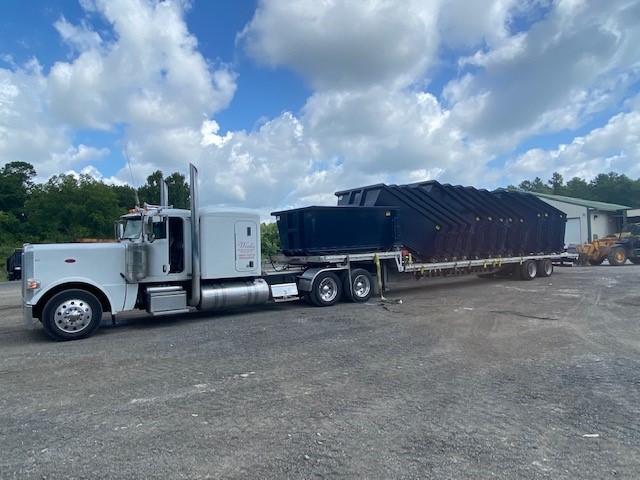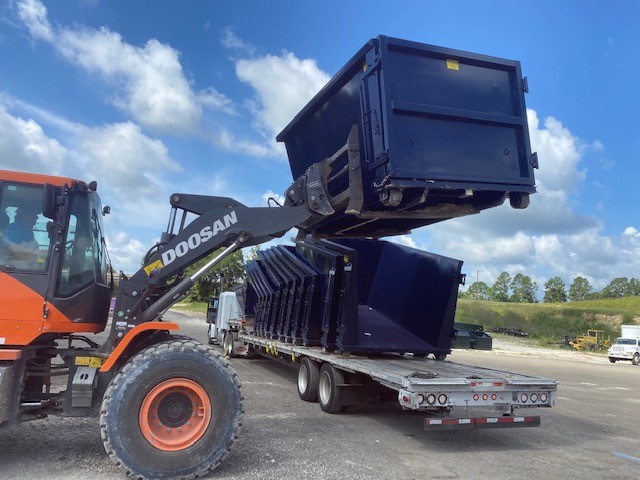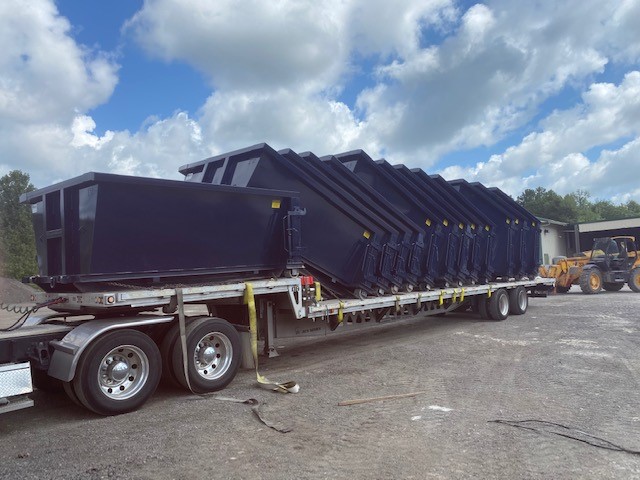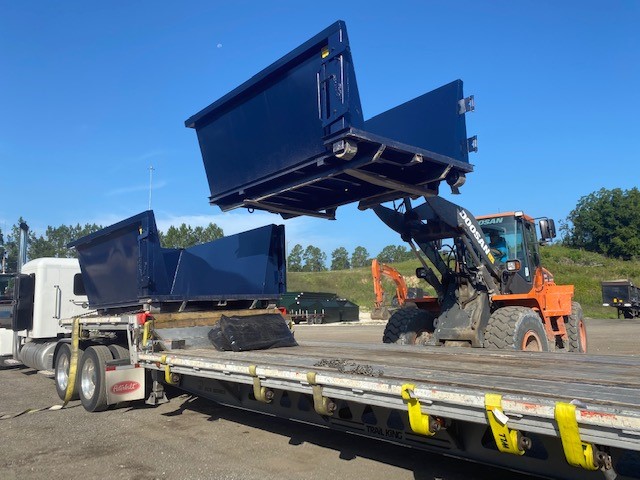
A History of the Roll off Truck
The history of roll off trucks actually dates back to the beginning of waste disposal. For centuries, mankind has used wagons and other mobile means to transport solid waste away from civilization. When trucks became commonplace in the 1920s, they were immediately utilized for garbage disposal throughout Europe and North America. The initial difficulty with garbage trucks was how to pick up waste from the curbside. This lead to the development of “the hopper” in 1929, which uses an arm to lift the garbage bin from the road and dump the contents into the truck.

As these disposal trucks grew in popularity, problems with odor control kept growing as well. Soon, waste collectors had difficulty keeping the trash and foul odors inside the truck, which lead to the deep-bed and open-topped trucks we’re familiar with today. In 1937, waste collectors were struggling with how to empty their trucks that were filled with waste, so the Dempster-Dumpster system was invented to mechanically tip out the contents of the truck. This also marks the entry of the word “dumpster” into the dictionary, in case you were interested!

By the 1950s, the first official design for roll off containers was created, leading to the industrialized design we’re familiar with today. Since then, the evolution of the garbage truck has been more subtle, based on technological improvement rather than groundbreaking innovation. Still, the various types of containers designed today are specific to certain circumstances, uses, and waste types.

Roll off Containers
Roll off containers for construction, waste, and recycling companies come in a variety of shapes and sizes. The most common configurations are 20 containers, 30 cubic yard containers, and 40 cubic yard containers. With so many configurations available, you can ensure that you have the space required for your needs without worrying about a container that’s too bulky or spacious. Roll off containers fulfill a variety of projects, whether you’re a homeowner cleaning out a house or a construction company regularly engaged in commercial projects.
The reason roll off containers are so popular is because they’re use goes beyond the construction site itself. In other words, aside from giving you the space needed to discard debris, it also keeps disposal efforts running smoothly beyond the dumpster. The ability to simply roll garbage right off the truck bed is not only efficient, but ensures the safety of everyone involved in the construction project.
Types of Roll Off Dumpsters
It’s important to note that not all trash trucks are created equal. The dumpster used will depend on the type of project being completed. The many types of dumpsters can be summarized into three main categories:
- Commercial waste containers. These roll off dumpsters are meant mostly for construction companies working with heavy-duty construction debris. Strong enough to handle roofing material, clean-outs, and irregular objects, the commercial waste container is most commonly used on job and construction types. However, these containers are not meant for hazardous materials.
- Residential waste containers. This type of dumpster is actually available to homeowners and everyday citizens. They’re perfect for yard debris, basement and attic clean outs, as well as home remodeling projects. Due to the nature of home improvement projects, these containers are smaller and thinner than their commercial counterparts so that they don’t consume the yard, but still provide plenty of disposal space.
- Recycling containers. Meant primarily for businesses, warehouses, and similar office complexes, recycling containers make it easy to properly recycle massive amounts of paper, plastic, and other recyclable materials. These roll off dumpsters are particularly popular because they can help businesses save on recycling fees while encouraging internal conservation efforts.
